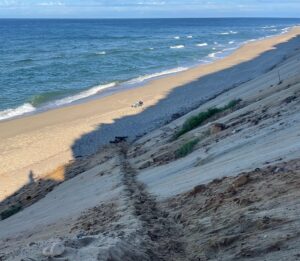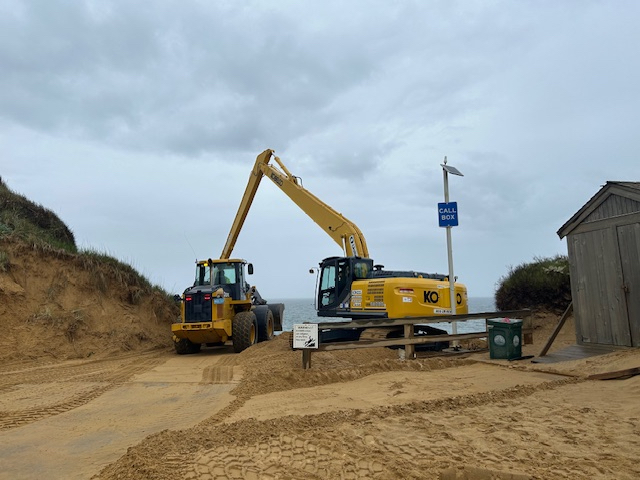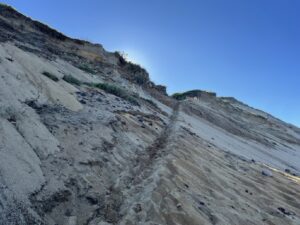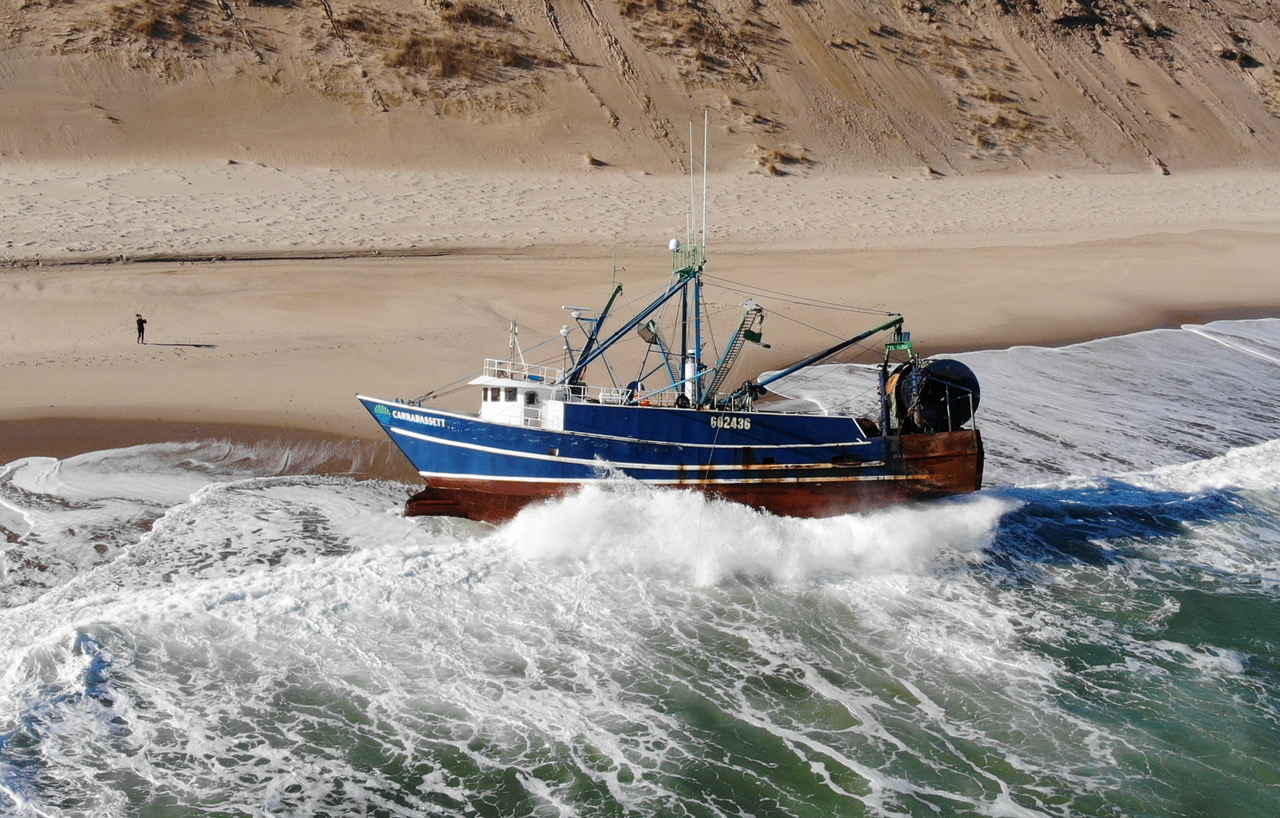TRURO — Longnook Beach reopened on May 16 after a two-month closure caused by extreme coastal erosion. The dune under the steep sandy pathway that leads from the parking lot down to the ocean had collapsed, making access hazardous.

“It was a vertical drop-off and unstable dunes,” said DPW Director Jarrod Cabral. “If anybody tried to get out there, it was nearly impossible.”
With the help of two excavators, three DPW staff members muscled the dunes into a traversable shape and slope. They had to “break apart the top of the dune where the access area is to create a safer slope for folks to walk down,” Cabral said.
The DPW rented a 60-foot “long arm” excavator so that workers could restructure the topography from the parking lot. It’s safer to do re-sloping work from atop the dunes than below them, Cabral said. After splitting apart the top of the dune, workers pushed sand down the slope with the arm of the excavator.

Even after that work, the two narrow footpaths leading north and south from the parking lot pose a challenge to beachgoers. The climb up the path can make hamstring muscles sore.
Sheila Fiandaca was visiting Longnook with her daughters Tessa Gencarelli and Olivia Parsons on Sunday, June 9 for “a memory lane trip.” They had come to the Outer Cape from Ashland almost every year in the ’90s and early aughts, Fiandaca said, and Longnook was their favorite spot to visit.
This time they opted against venturing down the slope, instead enjoying ocean views from the parking lot. Still, “we would’ve been so disappointed to find it closed,” Fiandaca said.
The sight of the striated sloping dunes triggered its own trip down memory lane. The pathway was “always so steep,” Fiandaca said. “Ridiculous. You had to stop five times on the way up.”
The town doesn’t disagree. Even after repairs, “Access to Longnook Beach can only be accomplished by a 50 to 70 foot steep, narrow path down the dune,” according to the Truro website.

But Fiandaca says the slope was always worth it for what lay at the end of the path: “a quiet, beautiful, quite remarkable beach.”
This was not the first time Longnook had to close for a spell because of erosion. In the spring of both 2018 and 2019, a similar, albeit less extreme, steepness precipitated closures, Cabral said. In those years, the DPW solved the problem using the excavator that they own, which has a 16-foot arm. That machine assisted in this spring’s re-sloping process as well.
The dramatic extent of the erosion this year had to do with “a combination of sea level rise and significant storms,” Cabral said. Wind direction also affects erosion on dunes — which helps explain why the beach didn’t have to close after powerful storms hit Provincetown’s East End two winters ago.
Mimi Gupta and Scott Williams of New York City were also at the beach on June 9 searching for a “very high frequency omnidirectional range station,” or VOR: a yurt-looking structure used for airplane navigation, supposedly located on the shore near Longnook. Williams works in air travel and was hoping to spot the VOR, though he and Gupta couldn’t find a pathway up from the beach.

They are spending the summer living on their sailboat in Provincetown and were visiting Longnook for the first time. They found the pathway from the parking lot steep but doable.
Gupta saw an “older gentleman” with a fishing rod making the climb and thought to herself, “That’s hardcore.” She couldn’t see herself hiking up the shoreline at that age, she said.
She also said that the narrow path is a price worth paying for an emptier beach: “If you want a beach that’s less crowded, you’ve got to work for it.”








